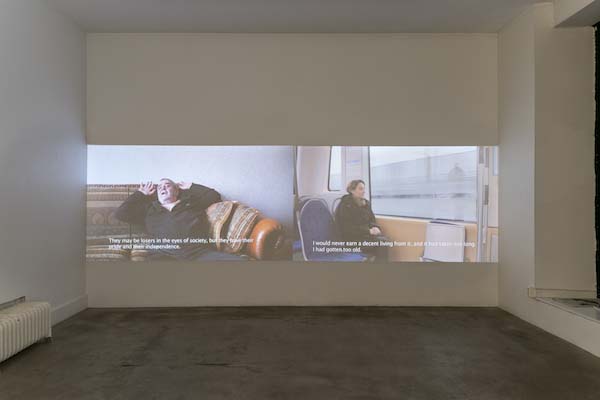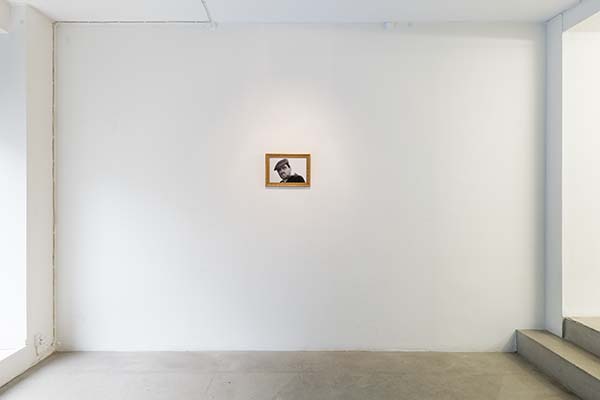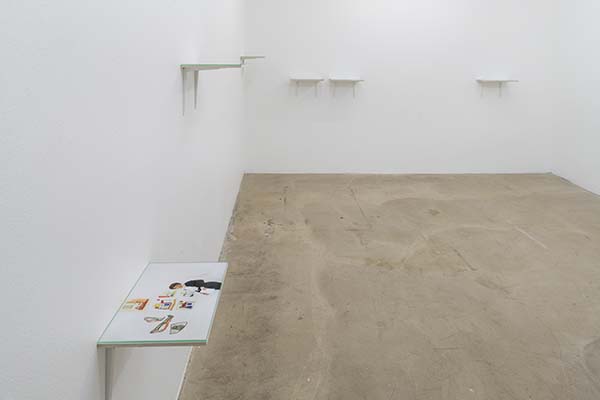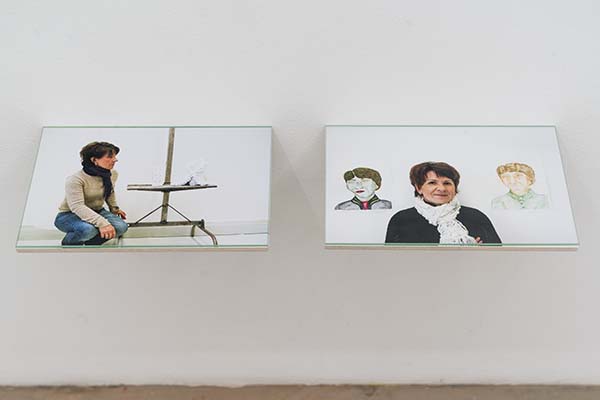Something good needs to happen
Artist Meira Ahmemulic draws frequent inspiration from her upbringing in the Gothenburg suburb of Angered and the contradictions in Swedish society surrounding class, language, immigration, work and racism. Her exhibition “Något fint måste hända II” draws on her own history and that of her family. It juxtaposes two dreams: the dream of her parents, who immigrated to Sweden seeking a better life for themselves and their children, and her own dream as an artist who left Sweden to escape the stigma of growing up in an immigrant suburb.
As an art student at the Valand Academy, Ahmemulic embarked on a collaboration with her mother, who was taking an art foundation course. They drew maps shaped like bodies, carved up and work-scarred – maps suggestive of the former Yugoslavia, but also of Gothenburg. The video Något fint måste hända (2017) shows that differences between Swedish and east European suburbs are diminishing. The exhibition also examines how narrow the conditions are under which people with immigrant backgrounds can pursue a path in the arts, looking at two different societies: Sweden and the United States.
Once again, the situation in the Balkans is driving people from their homes to seek a better life in countries like Sweden. The exhibition tells the story of a young man who leaves the Balkans for America, the fabled land of opportunity. He fights to survive, toiling at low-wage jobs and trying to get his green card. Meanwhile, stereotypes flourish of Yugoslavian men as barbaric, unemployed, uneducated, macho. What makes them so threatening? And is there something potentially revolutionary in the way they lead their lives?
Text by poet Linn Hansén:
Something good is going to happen, Montenegrans, Picture against the light/Enver, Fine art
When war broke out, most of our family was in Yugoslavia. Without killing anyone, the war broke us apart. One of my uncles was wounded, but survived. Many of my relatives traveled to countries that would take them in. For most, life improved. For some it got worse. For many, whether they won or lost is still unclear.
In 1993, Meira Ahmemulic was nineteen and had just enrolled in an art foundation course. One of her first assignments was to shoot a photograph against the light. Meira’s picture (hung on the right wall) shows her father at forty. Meira completed the foundation course and a few years later a one-year course at the Valand Academy called Sverige Omskapat (“Sweden, Recreated”) before entering the master’s program at Valand in 2004. Meanwhile, Meira’s mother, a former dressmaker and designer in Montenegro, enrolled in a foundation course at the Angered Studio (the photographs in the inner room were taken here). Each week Meira’s mother visited her daughter’s studio and hung her work on the walls. The two discussed art, and what art school teaches you and what it does not. They realized that the experiences Meira’s mother had to offer were worth little to her school. Later, Meira wrote about being a student in the Sverige Omskapat program, which hand-picked its participants from the pool of master’s applications, offering an alternative placement for applicants with foreign-sounding names: “We were assigned a studio without access to the academy’s common areas, and were not allowed to exhibit in the annual student show. The five-year students refused to have their work mixed in with ours, saying work by the Sverige Omskapat students would bring down the quality of the show…I had never thought of myself as an ‘immigrant artist.’ Like most in my program, I was second-generation. The school taught us that we were marginalized.”
Synonyms for dream include fantasy and castle in the air, but also vision, ambition, aspiration. The opposite of a dream can be a nightmare, but it can also be reality. Vukašin Štreker (seen in the video piece Något fint måste hända) is a Serbian immigrant to the United States who worked for years as an undocumented dishwasher in New York City before landing a job as a driver for Mariah Carey, whom he chauffeured to the inauguration ceremony of Barack Obama. While he waits in his car, Štreker writes novels that are bestsellers in Serbia. In the U.S. he is still just a driver. He says he exemplifies the American dream. For Meira’s parents, and for many others who fled the Balkan wars of the 1990s and the destitution that followed, the dream they have to deal with is the Swedish one.
“They haven’t slept in since they left home. Sleeping in is the only dream they have left.” If the American dream says that people of all social classes can achieve success (or at least more success than wherever they came from), perhaps the Swedish dream is one of security: that everyone can be free from anxiety, uncertainty and violence. In one of Meira’s works a father asks his daughter, “What does it mean to be Swedish?” He answers his own question: “Not much.” Meira shows us an immigrant existence in a Gothenburg where whole generations are molded by economic racism, worn down by cleaning jobs, restaurant jobs, nursing jobs. The same father asks his daughter to convince a teacher to graduate his wife early from a Swedish language course, so the wife can take a cleaning job right away. When the daughter refuses, he says, “I thought I was speaking with my daughter, not an institution.” What does it mean to be Swedish? What does it mean it to be a Montenegran in Sweden? The video piece Crnogorci suggests that we can recognize Montenegran men by their unwillingness to work and their fondness for bragging about imaginary assets. Which dreams may be dreamed, and by whom? What is required, and of whom, for a dream—in the sense of an aspiration—to be fulfilled?
I have read and worked with many of Meira’s texts, both as an editor and as a friend. I would like to say something about this exhibition in her words. They are words that reveal the dreams that form in a segregated Swedish city, in a racially stratified art world, in a family’s flight from poverty to poverty, dreams that are illusory, imperative, essential, treacherous, always financially aware. Who gets to provide security for their children? Who gets to be a writer in America? Who gets to be an artist in Sweden? A case worker in the suburb of Bergsjön told a young Meira to “stop dreaming” and get used to the idea that she could never become an artist. “Do you know anyone with your background who has?”
“As a child I thought she was mourning over her American cousins,” Meira writes of the sad songs her mother sang to relatives overseas. “I was glad my parents had emigrated to Sweden, where you didn’t have to write songs about how awful life was. America, like its history, was cruel, hard and unfair. Sweden, like its history, was humane, tolerant and equal. When we got older my sister and I went with my mother on evenings and weekends to clean factories, offices, restaurants. By then I had grasped that Mamma was not singing about distant relatives. The difference was that our relatives’ tragedies were American ones: cinematic and sentimental, old Hollywood, everything in black-and-white—and beyond a doubt they had fallen victim to a vicious capitalism. Our own setbacks and misfortunes felt like personal failures, inexplicable and unforgivable in a land where opportunity was supposed to be equal for all.”
Texts by Meira Ahmemulic:
“Förbannat är Amerika och guldet som glimmar” [The curse of America and its glittering gold], (Glänta 1.14). “Sverige omskapat” (Motbilder, GP 2014), ”Help” 2017 (not yet published)
Hendrik Zeitler




